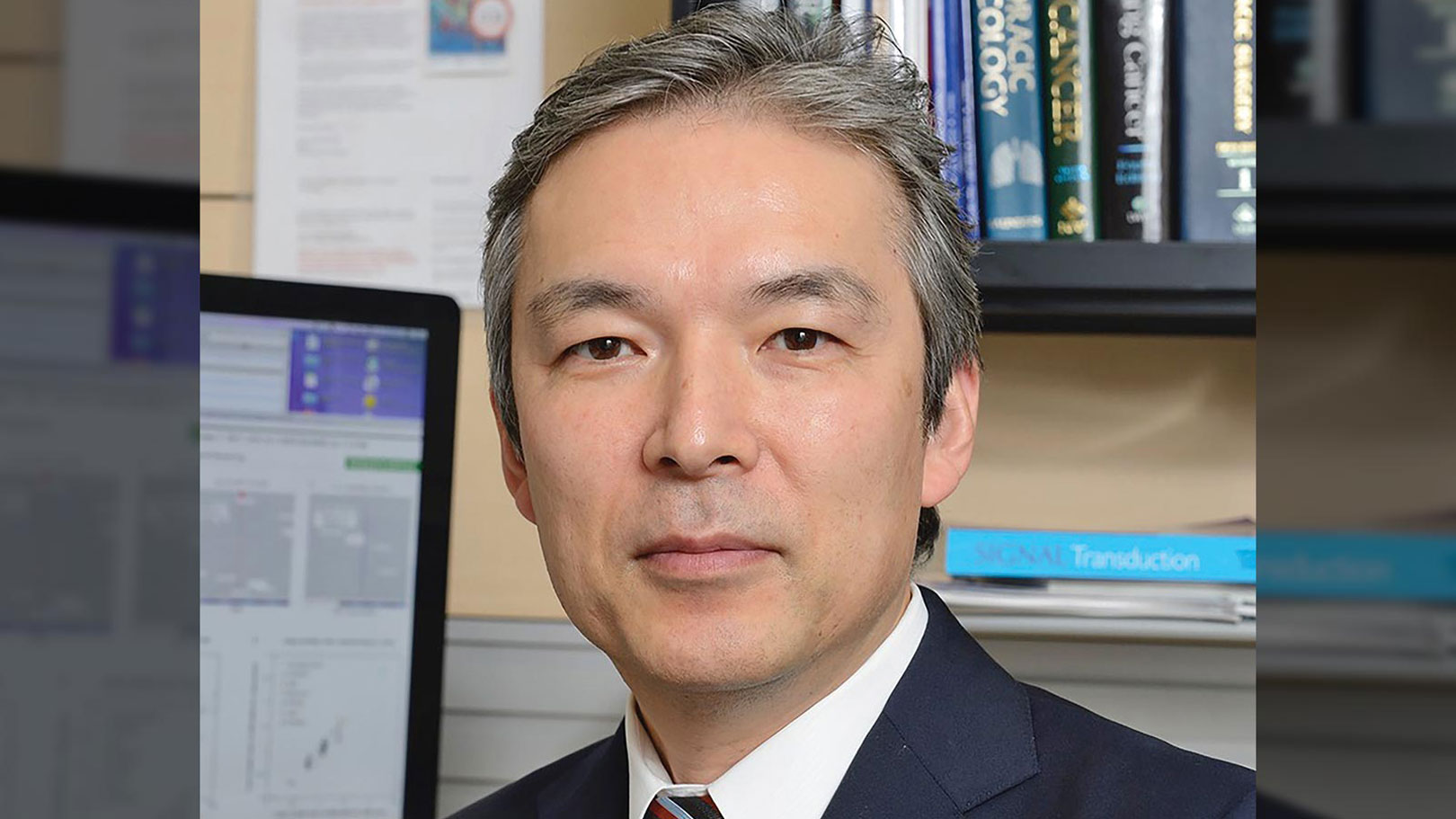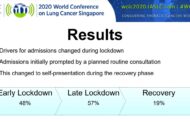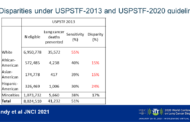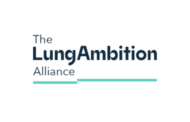Dr. Tetsuya Mitsudomi joined the Board of Directors of IASLC in 2011 and has served as its board president since 2019. IASLC awarded Dr. Mitsudomi its Mary J. Matthews Pathology/Translational Research Award in 2013 for a lifetime achievement in pathology and translational research of thoracic malignancies. Dr. Mitsudomi, professor in the Division of Thoracic Surgery at Kindai University Faculty of Medicine in Osaka, Japan, discussed what it was like to shepard the society through both daily and historic successes and challenges.
At the start of your term, you noted that you wanted to increase transparency in IASLC decision making, make IASLC educational content more available despite cultural/language barriers, and embrace a truly multidisciplinary approach. How have your goals been accomplished thus far?
Dr. Mitsudomi: When I received the IASLC flag from Professor Giorgio Scagliotti in 2019, I set the three goals mentioned in the question. Shortly after that, COVID-19 came into full swing, and the world became a completely different place. Despite the changes and uncertainty that the pandemic has caused, I feel that we have made progress in all areas.
Increased Transparency
Past- President, Dr. Giorgio Scagliotti, and the current CEO, Dave Mesko, had already initiated efforts to make the decision-making process more transparent. Currently, we have a monthly Executive Committee meeting that includes Dr. Scagliotti, who is now the Interim Chief Scientific Officer (CSO), the President-Elect Dr. Heather Wakelee, Finance Committee Chair Dr. Suresh Ramalingam, and the Secretary of the Board of Directors Dr. Enriqueta Felip, as well as Mr. Mesko and myself. The full Board meets every three months, and I meet separately with Mr. Mesko every two weeks. These interactions allow for many important decisions to be made, which are then communicated to the IASLC membership via announcements in the IASLC Connect’s CEO or President’s Corner, depending on the month. We have also developed a standard operating procedure (SOP) for the publication of papers that arise from IASLC committee work or projects. We will continue to develop SOPs for various processes to ensure consistency and transparency in the procedures.
Reduced Barriers
English is the standard language in an international medical association like ours; therefore, members who do not speak English as their native language, including myself, will be at a disadvantage in many ways. But the society is striving to bridge the learning gaps around the world through active support of educational programs in various countries in which not many IASLC members are present. I participated in the Latin America Lung Cancer Conference (LALCA) in Mexico in October 2019 and the IASLC-endorsed Cairo Journal Club Conference in Egypt in February 2020. Because of travel and in-person limitations during COVID-19, the IASLC has focused on expanding its virtual conferences to continue to share important education and scientific advances in thoracic cancers. In addition to the IASLC virtual meetings and webinars, other channels of education include jointly sponsored meetings or sessions and endorsement of local society meetings around the globe. (For a list of IASLC activities, visit IASLC.org and click the Meetings & Webinars tab. Select the Virtual Library to access the LALCA recordings.)
We must realize that there is a significant disparity in the world in terms of diagnosis and treatment, and thus treatment outcomes of lung cancer. It is very important for the IASLC as an international society to reduce these differences as much as possible. As a part of these efforts, meeting coverage of the IASLC Virtual Presidential Symposium held virtually in August 2020 was translated into Mandarin and disseminated to IASLC members in China. In addition, Spanish captions for session recordings from the North American Conference on Lung Cancer (NACLC) virtually hosted by the IASLC in October 2020, are available. The post-conference newspaper for this meeting will be translated into several languages including Spanish, Mandarin, and Japanese.
Outside of translations, the IASLC Targeted Therapies in Lung Cancer, which is held annually in Santa Monica, Calif, USA, in February, has been extremely well attended by members based in North America. This year’s conference will be entirely virtual, which will make it easier for people from various regions to attend. For those who cannot participate in real-time due to the time difference, we plan to have separate live summaries of key science and themes, as well as interactive Q&As for European and Asian members in their respective time zones.
These efforts illustrate that the Board is fully aware that there are many non-English–speaking members of IASLC, and we are continuing our efforts to satisfy every global member.
Enhanced Multispecialty Presence
Much of the recent progress in thoracic oncology has been made in drug therapies, such as molecular targeted therapy and immunotherapy, along with advances in understanding the molecular mechanisms of cancer. Thus, much of conference programs is also devoted to drug therapy. In the field of surgery, which is my specialty, recent advances are mainly directed toward minimally invasive surgery; it appears challenging to conduct research that can transform incurable lung cancer into curable disease. However, I believe that it is important to stimulate research in all areas, not just drug therapy. Currently, there is an IASLC committee dedicated to advanced radiation therapy, but there is no research committee for surgery. Therefore, I hope to establish a committee for surgeons in my remaining time as IASLC President, but this may be delayed further due to the pandemic. In the meantime, it is encouraging that the focus of drug therapy is expanding to include preoperative and postoperative treatments. In addition, the detection of minimal residual disease in surgical treatment using circulating-tumor DNA to monitor postoperative disease attracted great attention from the audience at the Hot Topic: Liquid Biopsy in Lung Cancer meeting (available in the Virtual Library). I hope that many young surgeons will be very active in developing a new perioperative treatment for lung cancer, in collaboration with medical oncologists.
You are the first IASLC President to encounter a global pandemic. How has COVID reshaped your term, goals, and social decisions?
Dr. Mitsudomi: I had my first Board of Directors meeting in December 2019 in Denver after I became President that September. In February 2020, I attended Targeted Therapies in Lung Cancer in California. However, immediately after that, the world was consumed by the COVID-19 storm that continues until this very moment. The IASLC’s important events, such as the World Conference on Lung Cancer, the European Lung Cancer Congress, NACLC, and other scientific meetings throughout 2021, will all be held virtually. This decision was made after a detailed analysis of the market landscape by the IASLC office. In hindsight, I am delighted that we were able to make this decision so quickly. To show that the IASLC is a useful organization for its members, efforts have been made to include multiple forms of interactivity in the conference formats as much as possible.
The transition to virtual conferences has been embraced across the wide spectrum of medical societies for obvious reasons. What do you think has been most successful about this shift? What still leaves something to be desired/do you miss about live meetings?
Dr. Mitsudomi: Starting in April 2020, all IASLC meetings will be virtual until the end of 2021. The staff and leadership will evaluate the conferences in the second half of 2021 to potentially add in-person components if it is safe and possible to do so. Much has been discussed about the challenges to the all-virtual conference environment, but I recognize benefits too. When I attended conferences in Europe or the United States, I needed to take two extra days for travel, but this is no longer necessary for the virtual events. Also, there will be tremendous cost savings regarding travel and accommodation expenses for the attendees of each conference, so it can expand the ability for more people to participate. The time difference is still an issue, especially between midnight and 6:00 am, but it is possible to work a regular schedule during the day and participate at night without taking leave. Also, attendees can watch multiple simultaneously presented lectures using the On Demand feature that accompanies each virtual conference for a period of time after initial presentation. I do acknowledge that there are things that are missed about the live environment, however, such as easy and natural interactive discussions in real time. In addition, it is almost impossible to have social events that are also important aspects of scientific meetings. I realized how important direct interaction with my friends was during my live attendance of the Japanese Lung Cancer Society annual meeting, which was held between the second and the third waves of COVID-19. So many of us miss seeing each other at various venues around the world.
Regarding WCLC, what are you most proud of in terms of your “mark” on the meeting?
Dr. Mitsudomi: Like many international conferences, this meeting will consist of educational content and scientific presentations on the latest data and its clinical context. Under the leadership of the co-chairs Drs. Wu, Soo, and Tan, an excellent program that will showcase invited talks and abstracts (more than 1,600 submitted) was developed by the regional organizing committee, thematic program committees, and IASLC staff. The oral presentations will be pre-recorded in case of technical errors, but there will be a live Q&A session at the end of select sessions to enhance interactivity as much as possible. The Presidential Symposium on January 29 will have six outstanding presentations, of which three are based on phase III studies. These studies cross geographic boundaries and represent the full lung cancer care continuum, from screening to disease recurrence. The topics include: a screening program in Taiwan, a phase III adjuvant study of tailored chemotherapy, neoadjuvant atezolizumab, a phase II study of KRAS G12C inhibitor, sotorasib, a phase III study of pembrolizumab and ipilimumab for NSCLC, and a phase III study of nivolumab for recurrent mesothelioma.
Going forward into 2021, what would you most like to see happen for IASLC members and patients with lung cancer?
The year of 2020 may have dawned with COVID, but it was a very productive year in the field of lung cancer research. Many important discoveries were made in the field of lung cancer in 2020, including the superior clinical efficacy of novel TKIs for NSCLC with RET fusion or MET exon 14 skipping mutations, ipilimumab and nivolumab with or without chemotherapy for NSCLCs, and nivolumab and ipilimumab for malignant pleural mesothelioma. In addition, many new indications were approved by the health authorities in several countries. There have been also reports of new classes of drugs, such as antibody–drug conjugates for patients with HER2 and HER3 activation, bispecific antibodies for those with EGFR and MET mutations, and KRAS G12C specific inhibitors. I was also impressed by the excellent DFS prolongation by osimertinib as adjuvant therapy for the patients with resected EGFR-mutated NSCLC, which was recently approved by the US Food and Drug Administration. The NELSON trial results, a phase III study of CT screening in Europe, were also published in the New England Journal of Medicine this year. I would like to pay tribute to all those who have made valuable contributions to overcoming lung cancer during this challenging time, and I hope to see a similarly fruitful 2021.
There are great expectations for the COVID-19 vaccine, but it will take some time before the vaccine is widely used in the world. On the other hand, of course, lung cancer does not pause, even during a pandemic, so it is important to forge ahead with clinical trials and in daily clinical practice. The IASLC will survey members in the near future to study the effect of COVID-19 on clinical trials in order to develop mitigation plans.
Currently, there is a decline in the number of new cases of lung cancer around the world due to the cessation or postponement of screening because of reluctance to visit hospitals and care centers. This may lead to an increase in the number of more advanced lung cancers and mortality in the future. I believe that this reinforces the importance of the IASLC’s mission to promote screening on a global level, thereby improving early diagnosis.






